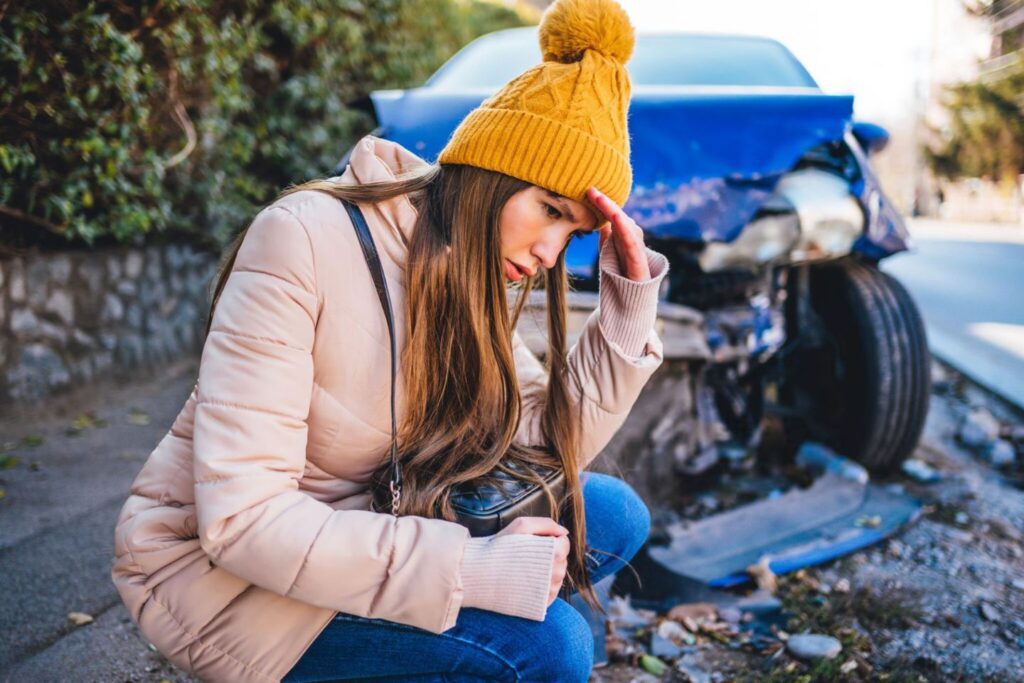Navigating what comes after a car accident in Santa Clara can feel overwhelming, especially when you consider the realities on the roads. US-101 in Santa Clara County has one of the highest fatality rates in the nation, with 78 lives lost over five years. This isn’t just a number—it’s a clear signal of the risks and a reminder of why knowing your legal rights post-accident is crucial.
In this blog, we’re tackling the complexities of Santa Clara car accidents head-on. We’ll explore the causes behind these accidents and outline the legal steps you need to consider in their aftermath. We aim to arm you with the information you need to navigate post-accident challenges confidently.
Common Causes of Santa Clara Car Accidents
Drawing from the OTS Crash Ranking report of 2021, we gain valuable insights into the common causes of car accidents in Santa Clara. These factors are critical to understanding, as they highlight where we can focus on making changes, both as drivers and as a community.
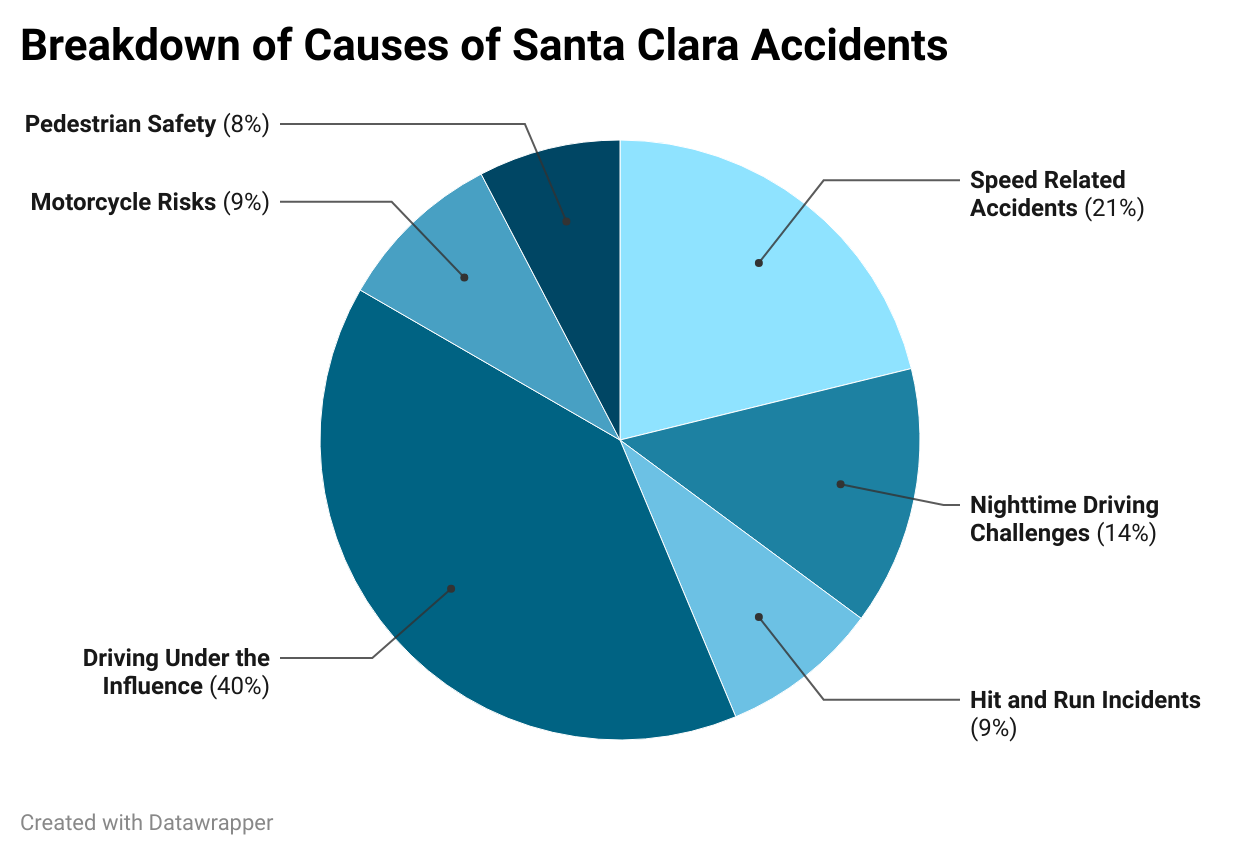

- Speed-Related Accidents: Topping the list with 47 incidents, speeding is a leading contributor to accidents. It’s crucial to adhere to speed limits designed to keep everyone safe, especially in areas prone to heavy traffic or with a history of collisions.
- Nighttime Driving Challenges: Reduced visibility and increased fatigue can make nighttime driving particularly hazardous. With 31 accidents reported between 9:00 pm and 2:59 am, it’s evident that extra caution during these hours could be life-saving.
- Hit-and-run Incidents: Hit-and-run cases stand out with 19 occurrences. These situations not only leave victims in a bind but also challenge the community to foster a culture of responsibility and support for those affected.
- Driving Under the Influence (DUI): The decision to drive while intoxicated led to 88 DUI arrests, which underscores the need for continuous education and intervention programs to deter impaired driving.
- Motorcycle Risks: Motorcycles, while an efficient means of transportation, were involved in 20 accidents. Drivers and motorcyclists alike should be vigilant about sharing the road safely.
- Pedestrian Safety: There were 17 incidents involving pedestrians, a statistic that calls for enhanced crosswalk safety measures and public awareness about pedestrian right-of-way.
If you’ve been affected by a Santa Clara car accident, the Personal Injury Center is here to support you. Our team, rich in personal injury industry experience, aims to connect you with a skilled lawyer in your area to advocate for you. Contact us today to take a step towards recovery and justice.
Factors Affecting a Personal Injury Case in Santa Clara, California
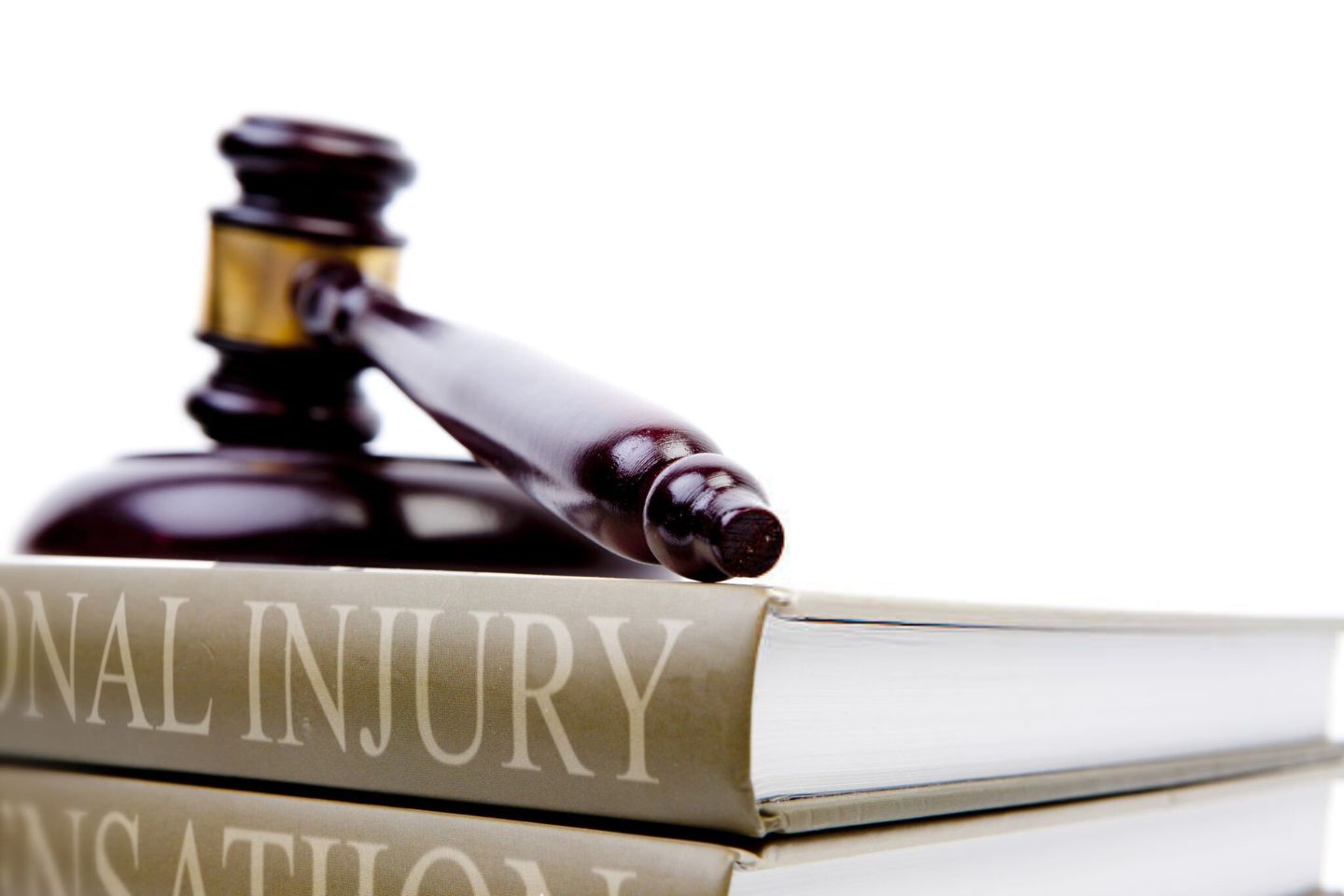

A personal injury case is essentially a quest for justice after you’ve been hurt because of someone else’s actions. It’s about holding the responsible party accountable and seeking compensation for the injuries you’ve suffered.
Navigating a personal injury case after a car accident in California requires a solid understanding of legal principles that can influence the case’s direction. Let’s break down a few:
Negligence
In legal terms, negligence is when someone’s failure to take reasonable care results in harm to another person. This fundamental concept is codified in California Civil Code 1714(a), which serves as a cornerstone for most car accident claims.
It can be split into two categories:
- Ordinary Negligence: This is garden-variety carelessness where someone didn’t act with the level of care that a reasonable person would under similar circumstances. For example, not paying attention to the road while driving.
- Gross Negligence: This goes beyond everyday carelessness. It’s when someone shows a blatant disregard for the safety of others, like driving at high speeds through a school zone while children are present.
Breach of Duty of Care
Every driver has a duty to act responsibly and avoid harming others, as articulated in California Civil Code 1714(a). A breach of this duty occurs when a driver does something that puts others at risk, like texting while driving. Proving this breach is a critical step in a personal injury case.
Comparative Negligence
California follows a “comparative negligence” rule. This means that if you’re partially at fault for your accident, you can still get compensated, but it’ll be reduced by your percentage of fault. If you’re found to be 30% responsible, your compensation will be reduced by that 30%.
Statute of Limitations
As outlined in California Civil Code 1431.2, there exists a deadline for filing a lawsuit, known as the statute of limitations. In California, the deadline to file a lawsuit for personal injury is two years following the date of the accident. Missing this deadline could mean losing your right to sue.
Assumption of Risk
When you choose to engage in activities that come with inherent dangers, such as street racing or extreme sports, the legal principle of “Assumption of Risk” comes into play. This concept implies that by deciding to participate, you’re aware of and accept the potential risks involved.
In legal disputes following an accident, this can significantly impact your case. If it’s determined that you voluntarily exposed yourself to a known danger, the responsibility for any resulting injuries may shift towards you, potentially decreasing or outright negating the compensation you might receive.
Punitive Damages
Punitive damages serve a different purpose compared to other forms of compensation. As outlined in California Civil Code 3294, these are specifically designed to punish the defendants for their wrongful behavior and to deter them and others from committing similar acts in the future. Unlike compensatory damages, which aim to “make the plaintiff whole” by covering costs like medical bills and lost wages, punitive damages are about penalizing particularly harmful conduct.
- Example: Imagine a scenario where a company knowingly sells a defective product that causes injury. If their actions are deemed egregiously negligent or harmful, a court might award punitive damages to the injured party. This not only provides additional compensation to the victim but also sends a strong message to the company and similar entities that such reckless behavior will not be tolerated.
Santa Clara Car Accident: When to Seek Legal Help
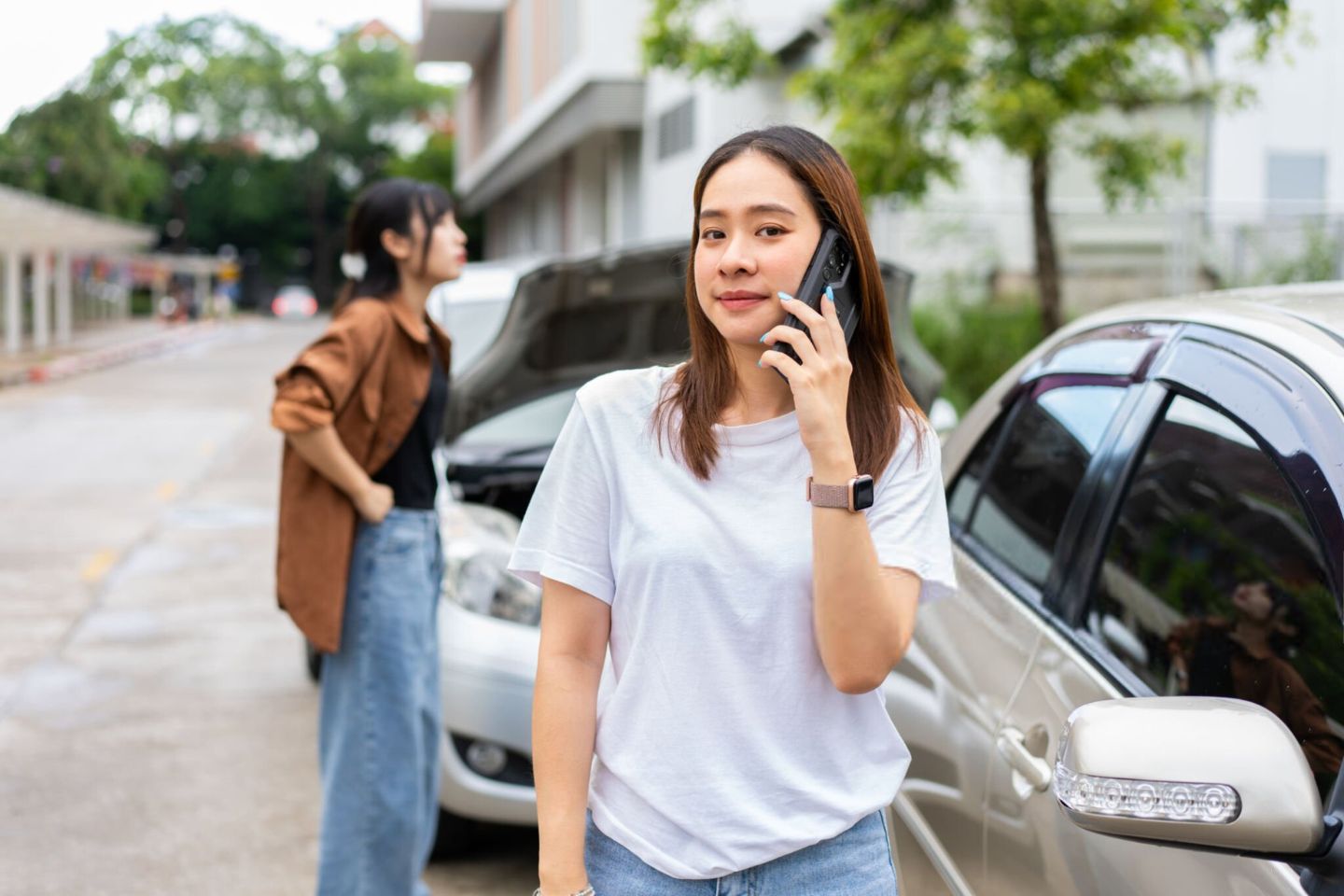

Navigating the aftermath of a car accident involves more than just physical recovery; it often includes a complex legal journey. Understanding when to seek legal assistance can be pivotal in safeguarding your rights and securing the compensation you deserve.
Here’s a deeper dive into the indicators that signal the need for a lawyer’s help:
Feeling Overwhelmed by Insurance
- The Insurance Maze: The process of filing and negotiating an insurance claim can be bewildering. Insurers may use complex language, offer settlements quickly to minimize payouts, or delay processes. A lawyer can cut through the red tape, advocating for your interests.
- Expert Negotiation: Insurance companies have teams dedicated to reducing their payouts. Having a lawyer by your side levels the playing field, ensuring you’re not undervalued or overlooked.
Fault Disputes
- Contested Liability: Determining fault can become a contentious issue, especially when multiple narratives emerge. A lawyer can help gather and present evidence to support your claim, challenge the opposing party’s account and clarify legal principles that affect fault determination.
- Insurance Denials: If the other party’s insurer denies their client’s liability or disputes the extent of your claim, a legal expert can challenge these denials, ensuring your case is accurately represented and pursued.
Severe Injuries and High Medical Costs
- Calculating the Full Cost: Severe injuries often lead to extensive medical bills, potential long-term care costs, and lost wages. A lawyer can help calculate not just current expenses but future financial needs, ensuring settlements encompass the full spectrum of recovery.
- Advocating for Your Future: With high stakes involved, a lawyer’s expertise is crucial in building a case that truly reflects the impact of your injuries on your life, advocating for a settlement that addresses both present and future needs.
Complicated Cases
- Navigating Complexities: Cases involving multiple parties, complex legal issues, or severe outcomes require a nuanced understanding of the law. Lawyers are equipped to handle the intricacies, from identifying all potential sources of liability to understanding the interplay of different legal standards.
- Strategic Planning: Complex cases often involve strategic considerations, such as where to file a lawsuit, how to effectively communicate with all parties involved, and how to present a case that maximizes the potential for a favorable outcome. A lawyer’s strategic insight can be invaluable.
Feeling lost in the legal aftermath of a car accident? The Personal Injury Center is here to help. We will connect you with top legal professionals in your area. Take control of your recovery journey with the right legal advocate by your side. Reach out to us today and move forward with confidence.
Steps to Take Immediately After a Santa Clara Car Accident
In the moments following a car accident in Santa Clara, your actions can significantly influence the outcome of any future claims or legal processes. It’s a time when every decision counts.
Here’s a guide to the critical steps you should take immediately after an accident to protect yourself and your interests.
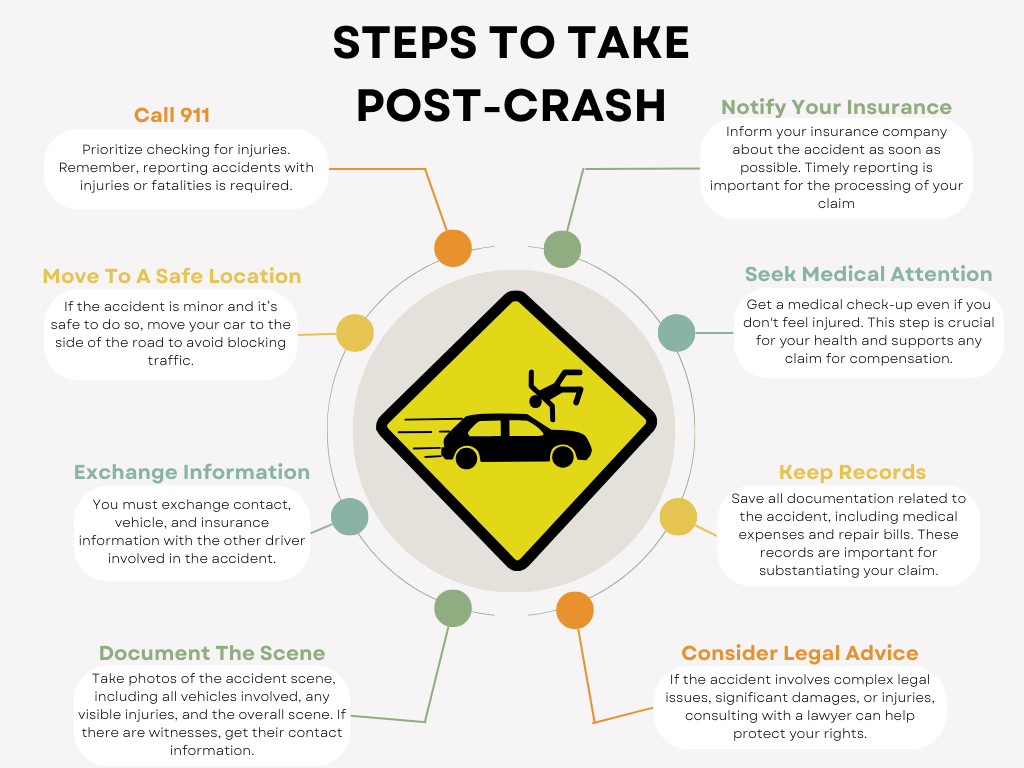

- Check for Injuries and Call 911: Prioritize checking for injuries. If there are any, call 911 right away. Remember, reporting accidents with injuries or fatalities is required (California Vehicle Code 20008).
- Shift to a Safe Spot: For minor accidents, and if it’s safe, relocate your vehicle to the roadside to prevent obstructing traffic, adhering to California Vehicle Code 22100.5)..
- Exchange Information: You must exchange contact, vehicle, and insurance information with the other driver involved in the accident (California Vehicle Code 16025). This is essential for the claims process.
- Document the Scene and Look for Witnesses: Take photos of the accident scene, including all vehicles involved, any visible injuries, and the overall scene. If there are witnesses, get their contact information. This can prove to be crucial evidence for insurance claims and legal matters.
- Notify Your Insurance: Inform your insurance company about the accident as soon as possible. Timely reporting is important for the processing of your claim and is typically required by your insurance policy.
- Seek Medical Attention: Get a medical check-up even if you don’t feel injured. Some injuries might not be immediately apparent. This step is crucial for your health and supports any claim for compensation (relevant to California Civil Code 3333.2).
- Keep Records: Save all receipts and documentation related to the accident, including medical expenses and repair bills. These records are important for substantiating your claim (aligned with the principles of California Civil Code 1714).
- Consider Legal Advice: If the accident involves complex legal issues, significant damages, or injuries, consulting with a lawyer can help protect your rights (as suggested by California’s comparative negligence approach in Civil Code 1431.2).
Struggling after an accident? Let the Personal Injury Center be your guide. We’re seasoned professionals dedicated to educating you on your legal rights and connecting you with expert lawyers in your area. Get in touch to navigate your way to the compensation you rightfully deserve.
Key Takeaways
|



